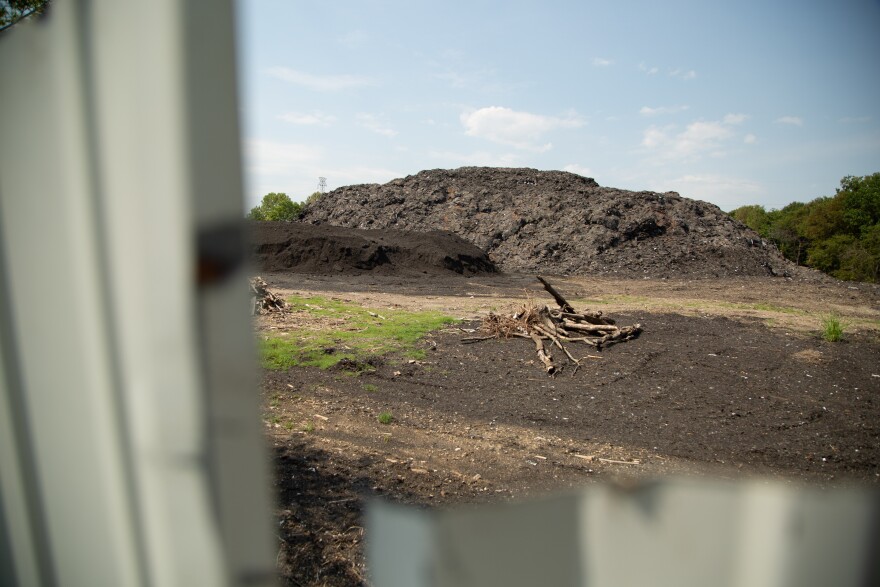In the heart of southeast Dallas, a huge pile of toxic waste looms over the Floral Farms community — Shingle Mountain. After a close to three-year fight to get rid of it, the city of Dallas hired and approved a $450,000 contract with Roberts Trucking, Inc. to haul it away.
KERA's Alejandra Martinez talked about why industrial development and waste is usually placed next to communities of color with Diane Jones Allen, a professor at UT Arlington's College of Architecture, Planning and Public Affairs who studies environmental racism and climate justice.
The following transcript has been slightly edited for clarity.
Interview Transcript:
Alejandra Martinez: One of the first things I heard when I started covering Shingle Mountain was, "Shingle Mountain is a poster child for what environmental racism looks like." What is environmental racism and why is Shingle Mountain such a strong example of that?
Diane Jones Allen: Environmental racism is about land and where people live and the environmental health and economic impact that comes from where certain people are placed. Being located near factories, being located near a toxic substance like shingles, roofing materials being piled in your neighborhood — that has a detrimental impact to one's health, the value of one's land, one's economy, one's ability to survive.
Being located near a toxic substance like shingles has a detrimental impact to one's health, the value of one's land, one's economy, one's ability to survive.Diane Jones Allen
AM: Basically, Southeast Dallas was used as a dumping ground for the shingles that no one really wanted to deal with. Based on your research and the work that you've done, why do you see this type of pollution more in communities of color?
DJA: Oh, because of land value, knowing that this community doesn't have political or economic agency or power. Often, you know, that (you're not) gonna put that in North Dallas, right, because they have economic power and will to say this is not going to happen.
It's known that these communities, the agency, with the people that should have the agency to protect them is not there. And that's why those things happen there. And so they do have to harness their own agency to fight back, which many of these communities have done and are doing. And that's usually how these things happen. They get corrected, because communities organized from the ground up.

AM: The city has hired a company to remove Shingle Mountain. What do you think is the most important thing the city of Dallas can do for the people who have been living next to Shingle Mountain going forward?
DJA: The zoning, what allows that to happen? And the reason why you want to, is so that it doesn't happen again? Does there need to be some policy, change some zoning change, something, so that that can't happen again? And the next thing along with that is some testing to make sure that, you know, that it isn't just an assumption that people got sick. To really make sure that they didn't. Some testing of that community that was really impacted by it. And then a plan. So how do we remediate that? So once it's gone, like what do we do with the space that's there?
AM: Why is environmental racism so damaging and so difficult to untangle?
DJA: Well, because environment is connected to land, which is a lot of things. It's about belonging, community health, people's ability to continue to thrive and live, and these things are happening in their home. Sometimes through zoning and development, certain communities are placed beside already existing hazardous development. It's about value, a community's value, and it's something that can be fixed. It will take a lot of political will, agency to do that, but it's it's really important.
Got a tip? Alejandra Martinez is a Report For America corps member and writes about the economic impact of COVID-19 on marginalized communities for KERA News. Email Alejandra at amartinez@kera.org. You can follow Alejandra on Twitter @_martinez_ale.
KERA News is made possible through the generosity of our members. If you find this reporting valuable, consider making a tax-deductible gift today. Thank you.







